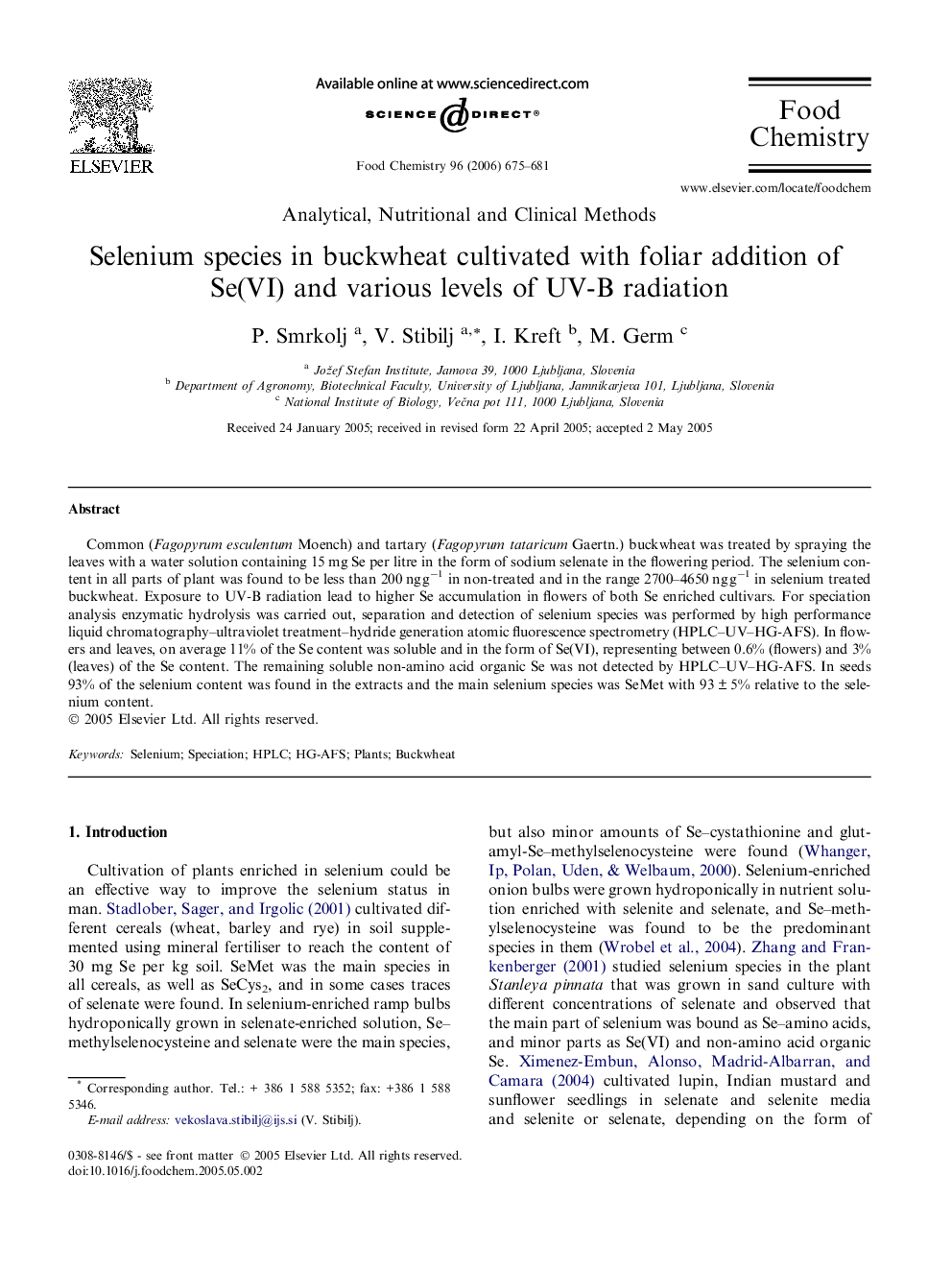| Article ID | Journal | Published Year | Pages | File Type |
|---|---|---|---|---|
| 1191534 | Food Chemistry | 2006 | 7 Pages |
Common (Fagopyrum esculentum Moench) and tartary (Fagopyrum tataricum Gaertn.) buckwheat was treated by spraying the leaves with a water solution containing 15 mg Se per litre in the form of sodium selenate in the flowering period. The selenium content in all parts of plant was found to be less than 200 ng g−1 in non-treated and in the range 2700–4650 ng g−1 in selenium treated buckwheat. Exposure to UV-B radiation lead to higher Se accumulation in flowers of both Se enriched cultivars. For speciation analysis enzymatic hydrolysis was carried out, separation and detection of selenium species was performed by high performance liquid chromatography–ultraviolet treatment–hydride generation atomic fluorescence spectrometry (HPLC–UV–HG-AFS). In flowers and leaves, on average 11% of the Se content was soluble and in the form of Se(VI), representing between 0.6% (flowers) and 3% (leaves) of the Se content. The remaining soluble non-amino acid organic Se was not detected by HPLC–UV–HG-AFS. In seeds 93% of the selenium content was found in the extracts and the main selenium species was SeMet with 93 ± 5% relative to the selenium content.
